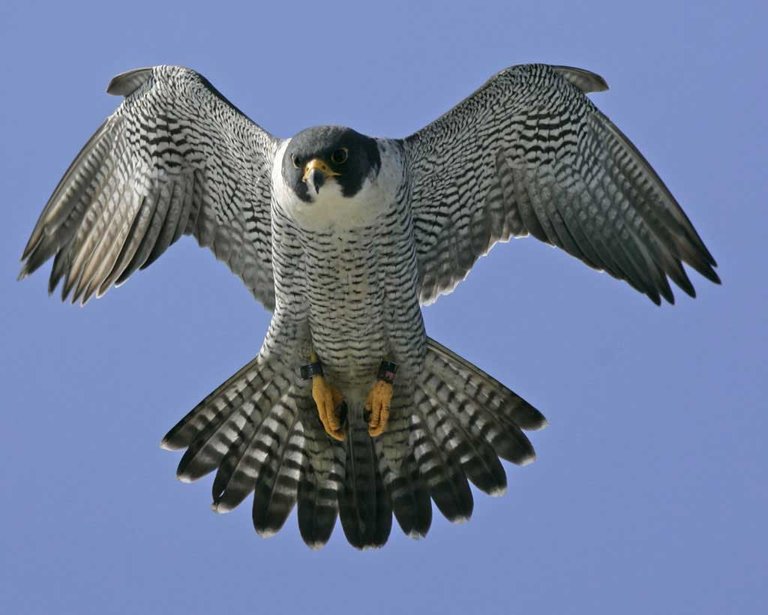
It is one of the fastest birds in the world and possibly reach 320 kilometers per hour as it plummets down from great heights to attack its prey. Falconers and biologists consider it one of the most noble and wonderful birds of prey. Although it can be found on all six continents, the pilgrim is rare in most areas. It was in serious danger of extinction in the mid-twentieth century due to the effects of DDT and other persistent pesticides.
The peregrine falcon (Falco peregrinus) is a species of Falconiform bird of the family Falconidae of cosmopolitan distribution. It is a huge hawk, the size of a crow, with a bluish gray back and a whitish lower part with dark spots; The head is black and has a large and characteristic black mustache.
Normally it does not fly at speeds above 100 km / h, 3 but when it is chopped or when it hunts, it can reach more than 300 km / h, making it the fastest animal in the world. As in other birds of prey, the female is much larger than the male, and several authorities recognize 17-19 subspecies, which vary in appearance and habitat.

The geographical distribution of their breeding areas ranges from the Arctic tundra to southern South America. It can be found almost everywhere on Earth, except in extreme polar regions, very high mountains and tropical forests; the only extensive land area without ice in which it is completely absent is New Zealand, which makes it the most widespread bird of prey in the world. Both the scientific name and the Spanish name of this species mean "traveler hawk", a cause of the migratory habits of many northern populations.
Although its diet is almost exclusively in medium-sized birds, it sometimes hunts small mammals, small reptiles and even insects. It reaches sexual maturity in a year and is matched for life. It nests in small hollows in the ground without providing any material, usually on the edges of cliffs or, in recent times, in high structures built by humans.The peregrine falcon became a species in danger in many areas due to the use of pesticides , especially DDT. Since the prohibition of DDT in the early 1970s, the populations recovered, supported by the large-scale protection of their nesting and release sites in the wild.
In countries like the USA In the United States, Canada, Germany and Poland, Wildlife Services peregrine falcon recovery teams breed specimens of this species in captivity.The chicks are fed through a conduit or with a puppet that imitates the head of an adult hawk, so that they can not see the breeders and thus avoid their imprint with humans.When they are of the right age, their breeding cage opens, allowing the bird to train its wings and, when it is strong enough , the feeding is reduced to force the animal to learn to hunt by itself.To free a hawk educated in captivity, the bird is placed in a special cage on top of a tower or on a ledge of a cliff during a few days, allowing him to acclimate to his future environment. Recovery efforts worldwide have had remarkable success, restricting the use of DDT allowed released birds to reproduce with some success.